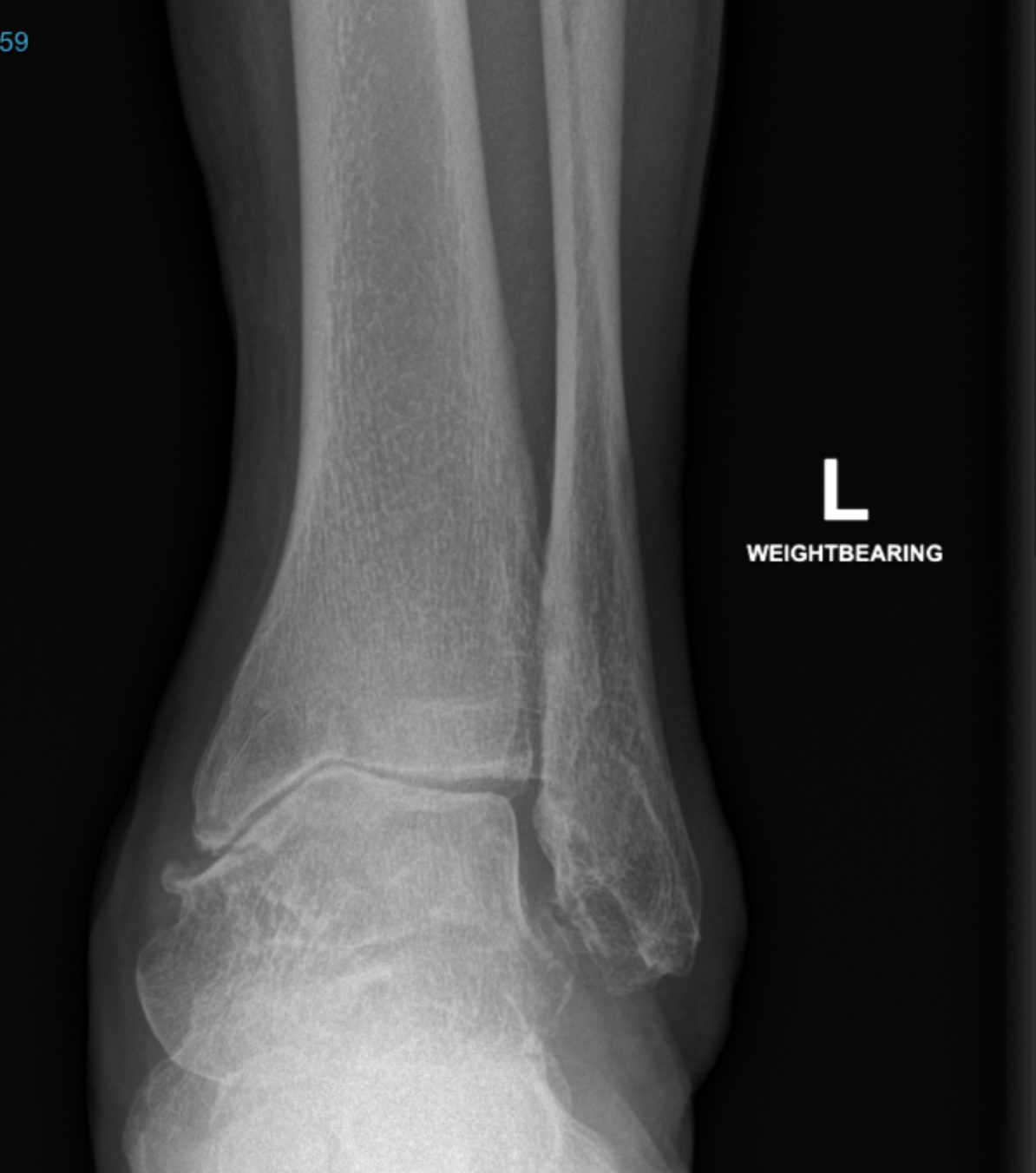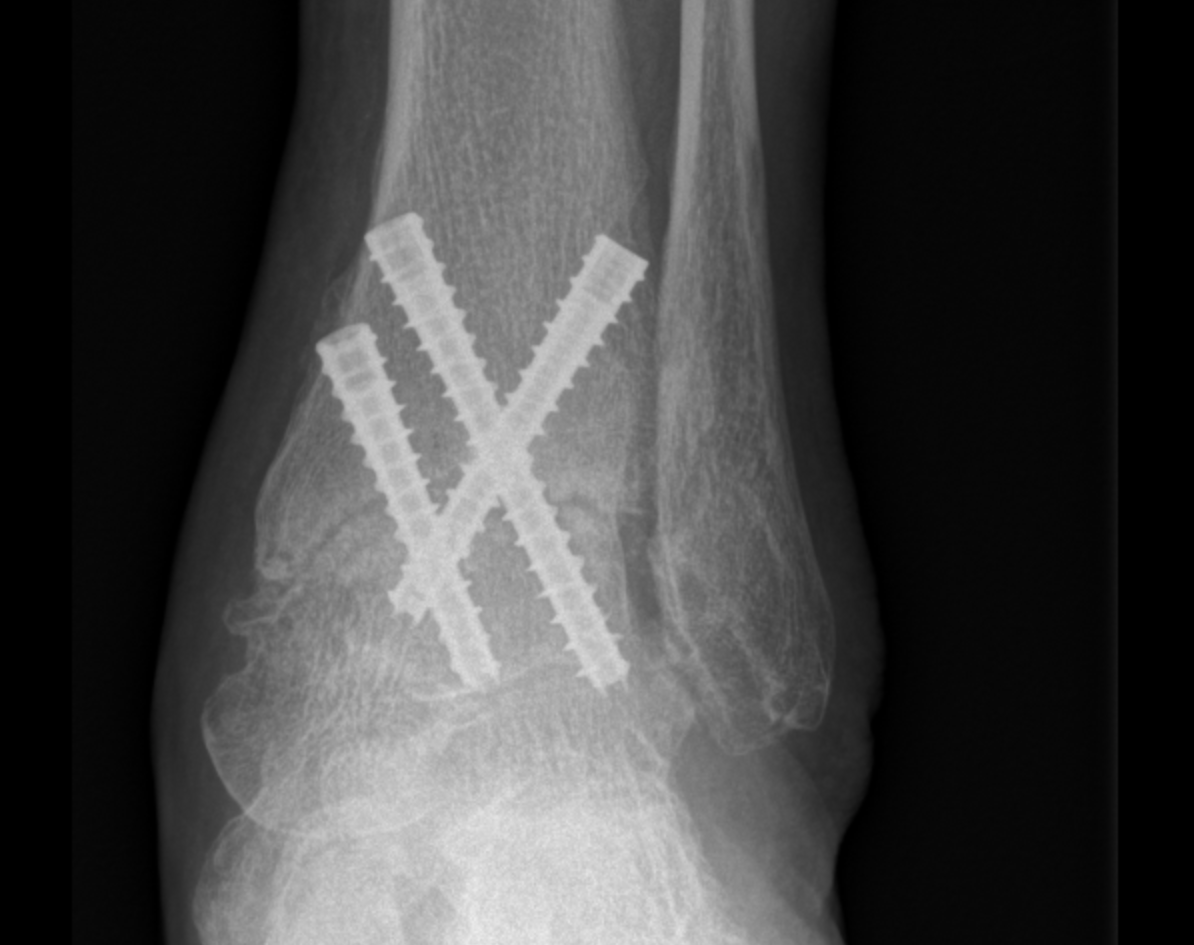Ankle Joint Anatomy
The ankle joint itself is made up of the two bones in the lower leg (tibia and fibula) and the talus (large bone that connects to both the tibia and fibula). The talus is a unique dome shaped bone. No muscles attach to the talus, and it has the highest percentage of articular cartilage coverage of any bone in the body, approximately 60% of its surface area.
The ankle joint is largely responsible for flexion and extension movements.
Why do people get ankle arthritis?
Ankle arthritis can be classified as primary or secondary arthritis.
Primary Ankle Arthritis
Unlike Hip and Knee arthritis, primary ankle arthritis is rare. Primary ankle arthritis indicates that there is no known underlying cause as to why the arthritis has developed.
Secondary Ankle Arthritis
The most reason for someone developing ankle arthritis is having a previous injury, or injuries, to the ankle joint. This can either be a previous ankle bony fracture (‘break’), or previous ankle sprains. Secondary damage occurs to the joint surface and with time, irreversible arthritis occurs.
Other causes include inflammatory conditions that affect multiple joints, such as Rheumatoid Arthritis or Gout, or the development of an infection within the joint.

What are the symptoms of ankle arthritis?
The symptoms of ankle arthritis vary based on the severity of the joint surface damage, and the functional level of the individual.
Classically pain, stiffness, swelling, and difficulty walking are present. During the early phases of the condition the pain may be limited to exercise, or only present at the extreme of ankle motion. With time, the arthritis involves more of the joint, and pain at rest occurs.
Large bony protuberances (Osteophyte’s) can form, resulting in a change to the shape of the ankle.
Imaging
Plain weight bearing ankle x-rays show the extent of the arthritis, and allow assessment of other ‘joints’ within the foot, including the subtalar joint (joint below the ankle joint) and midfoot joints.
In subtle cases, or to help assess the other joints, and CT or MRI scan may be performed.


Treatment
Ankle arthritis is a debilitating condition that often results in pain whilst walking and a poor quality of life. Treatment is aimed at minimising the symptoms of pain while restoring function.
Ankle orthoses and specialised footwear can be beneficial in reducing the forces that are going through the arthritic ankle joint.
When conservative measures fail, there are three main surgical options depending on the individual case.
In the early phase of ankle arthritis, tibial spurring (bony growth) can occur at the front of the ankle joint. This can result in painful impingement and often responds well to keyhole decompression.
The gold standard of surgical treatment for ankle arthritis is to perform a fusion. Patients with advanced ankle arthritis typically have very limited ankle joint motion, but what motion they do have is painful. A ‘Fusion’ procedure involves eliminating this small degree of painful motion by removing the remaining joint cartilage and joining the tibia and the talus together.
In a small subset of low demand patients, an ankle joint replacement may be an appropriate treatment option. This involves replacing the arthritis joint with an artificial joint.


Have you previously injured your ankle?
The most common cause for developing ankle arthritis is previous ankle sprains or fracture
With time, arthritis may develop leading to daily pain

